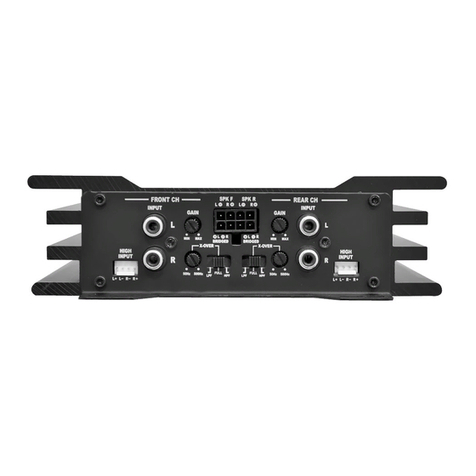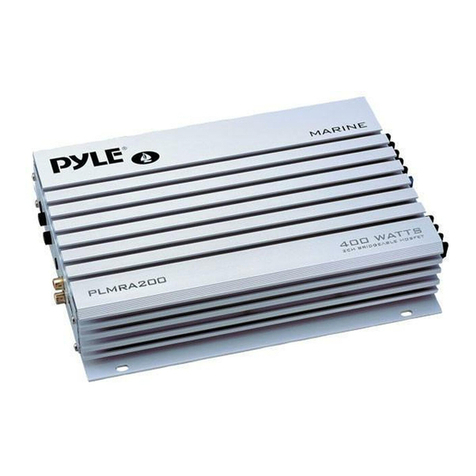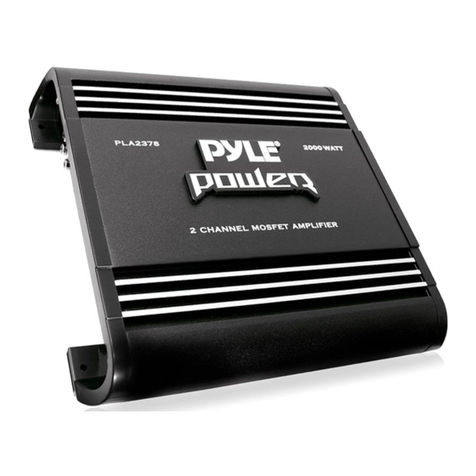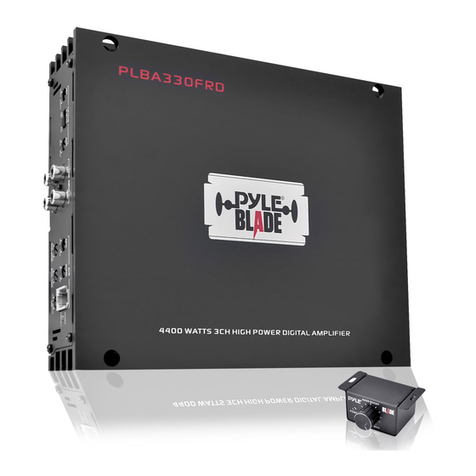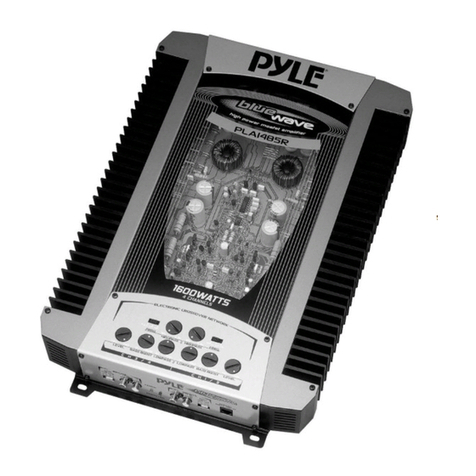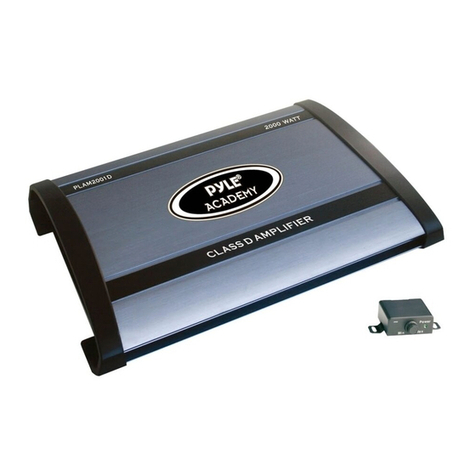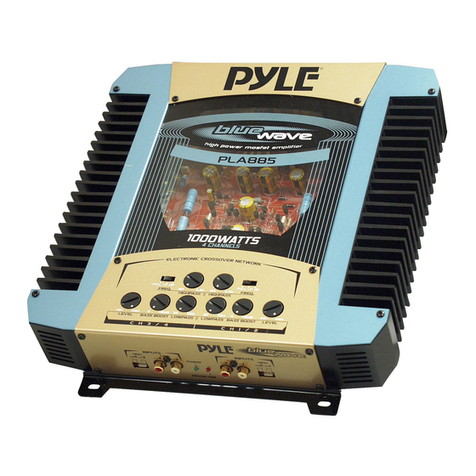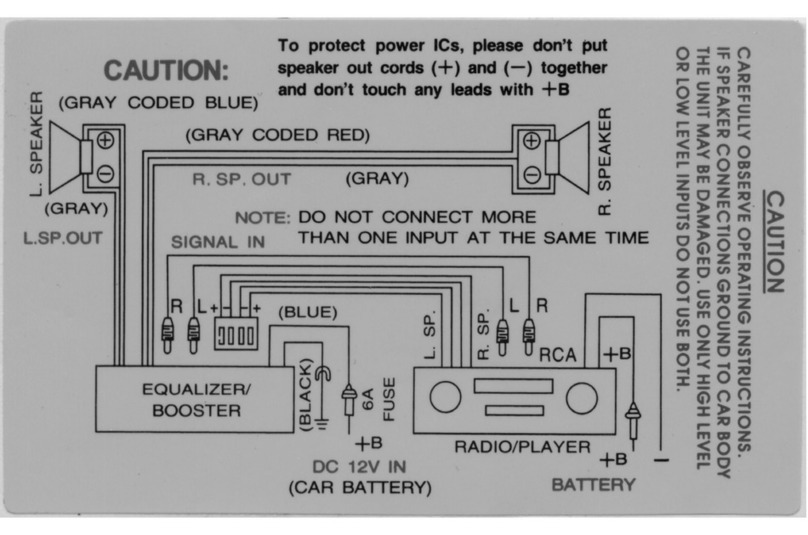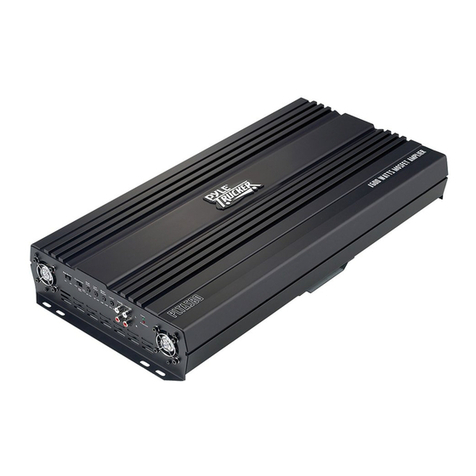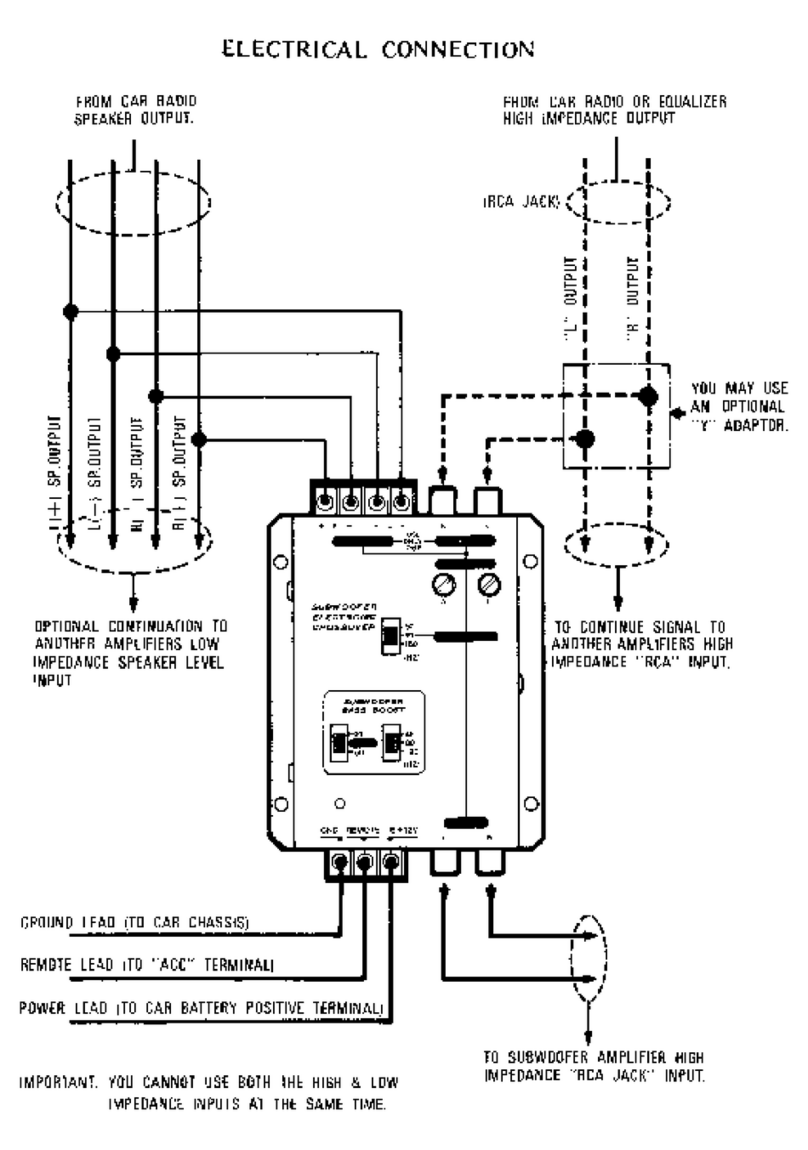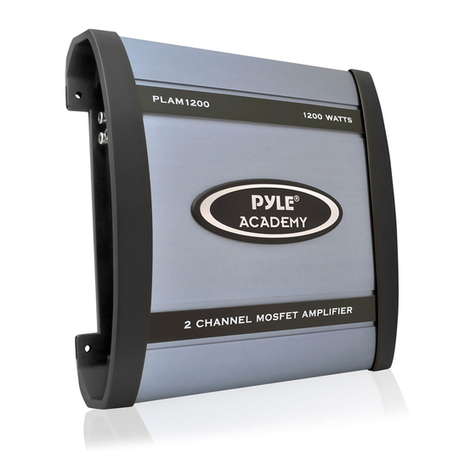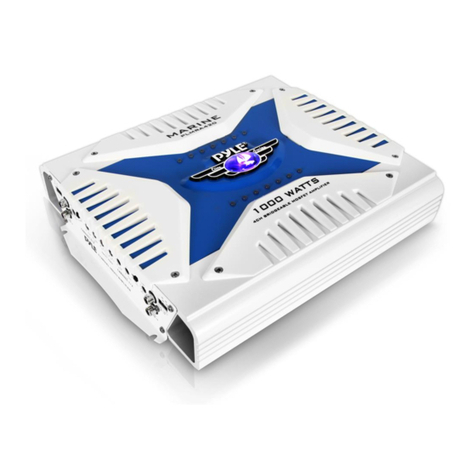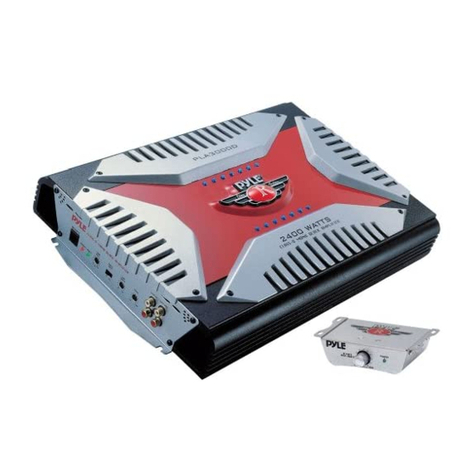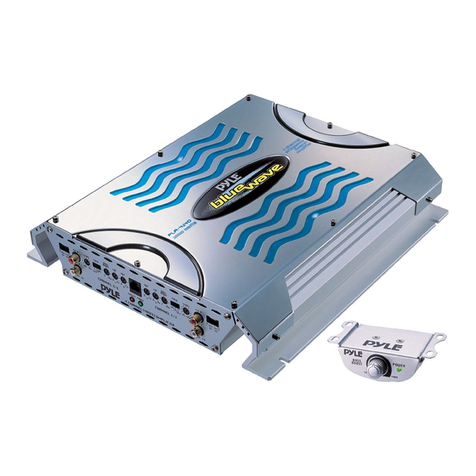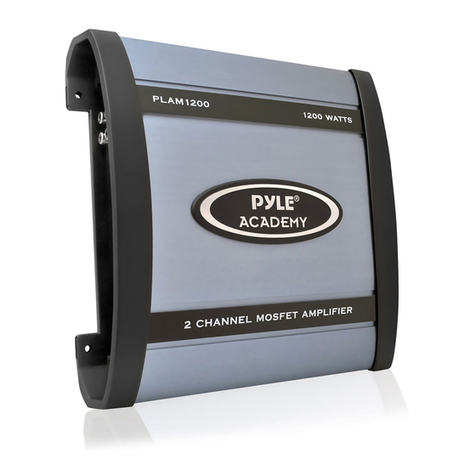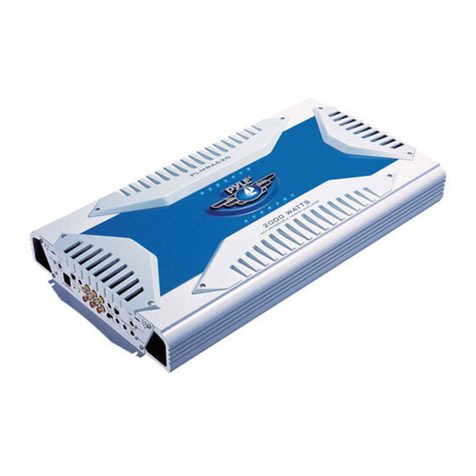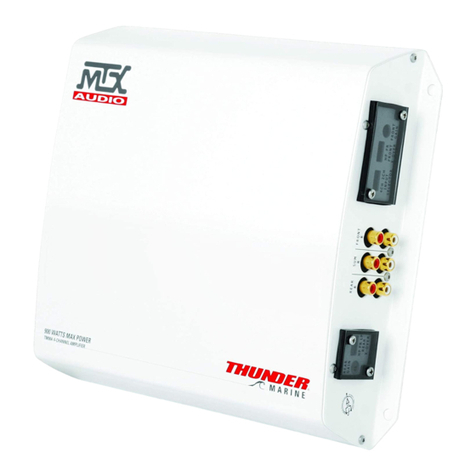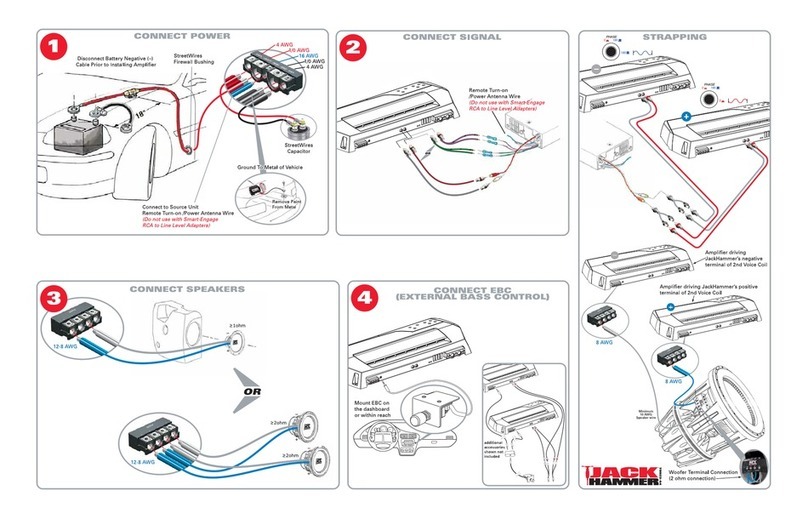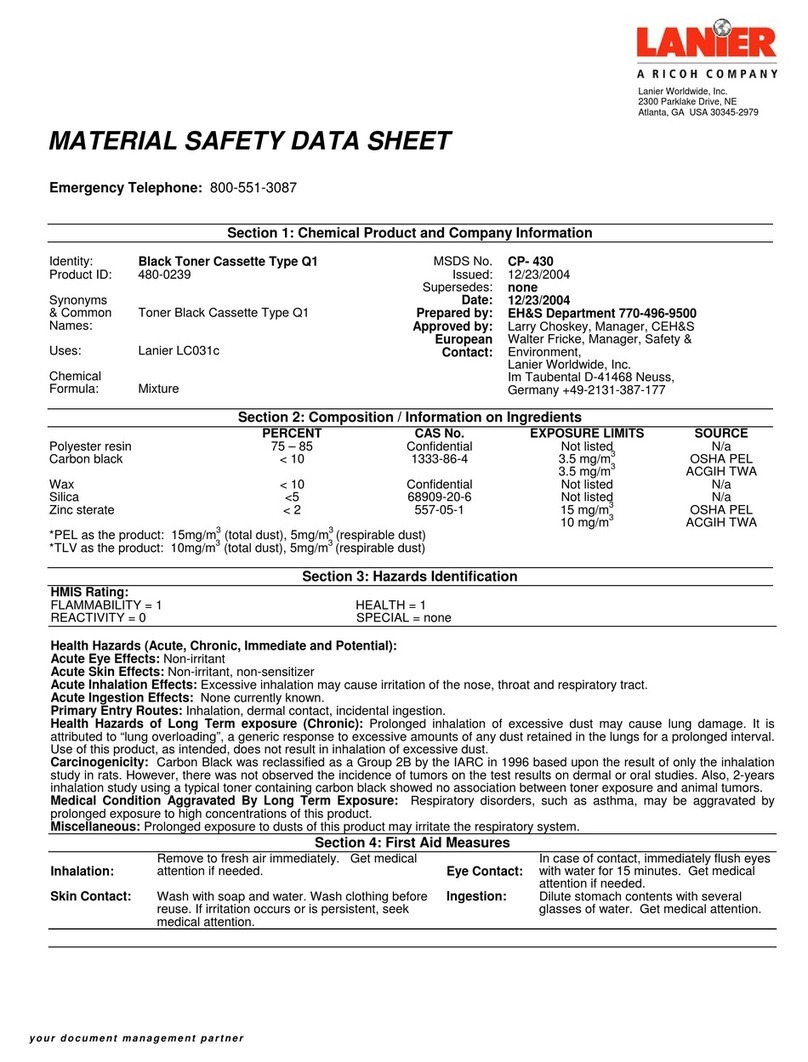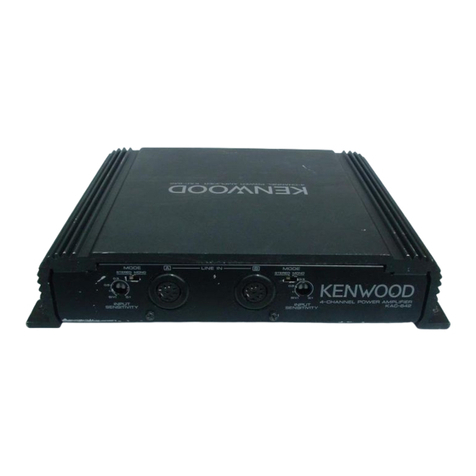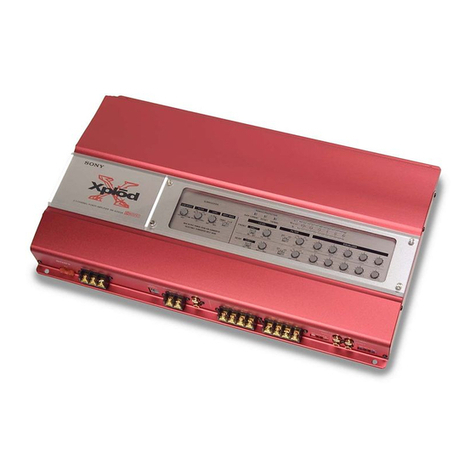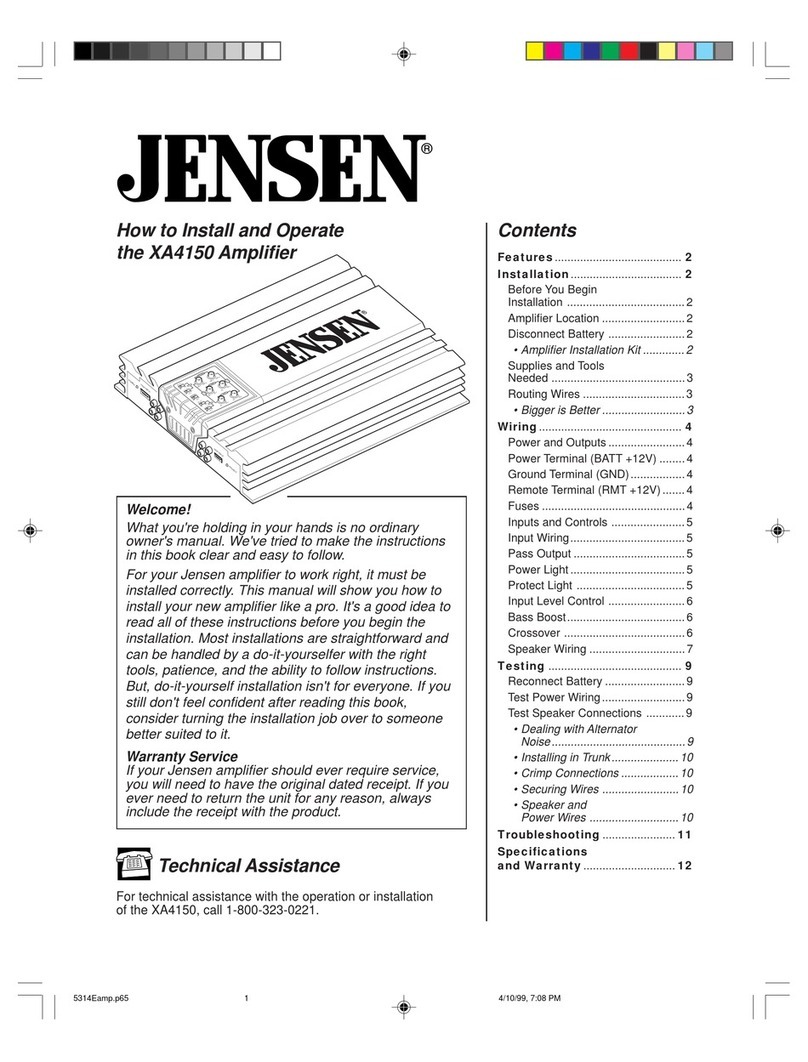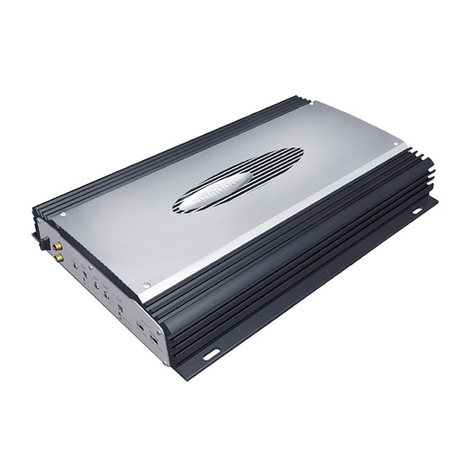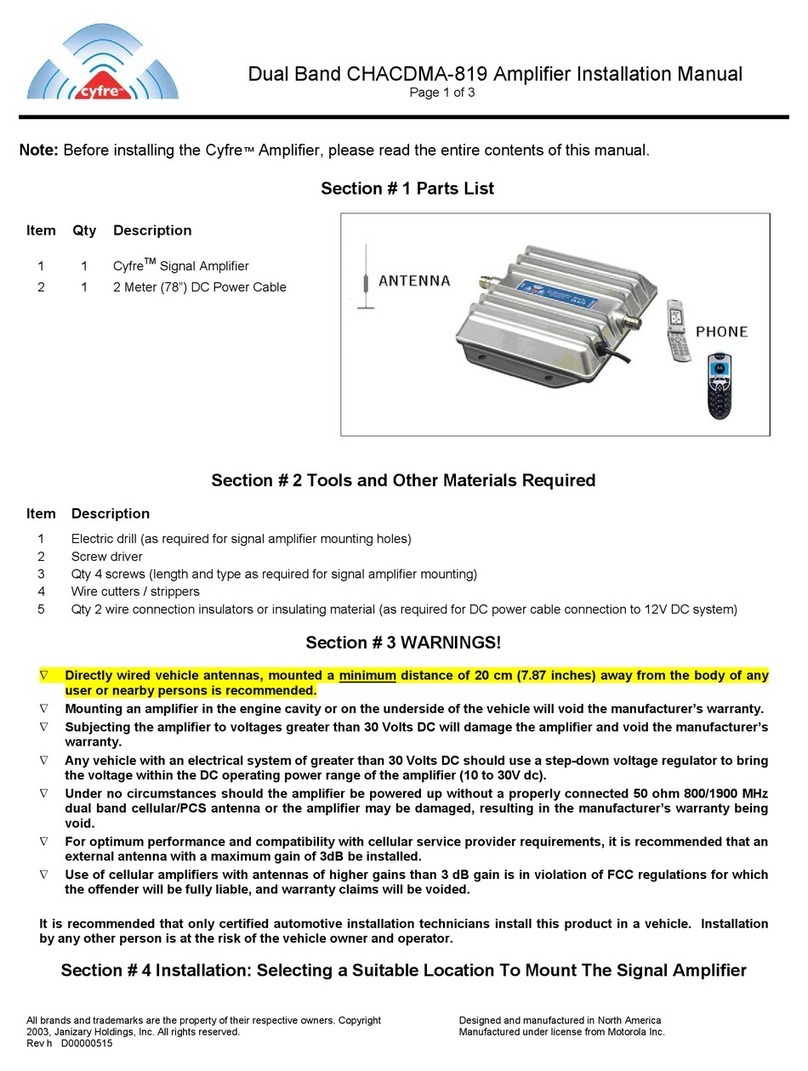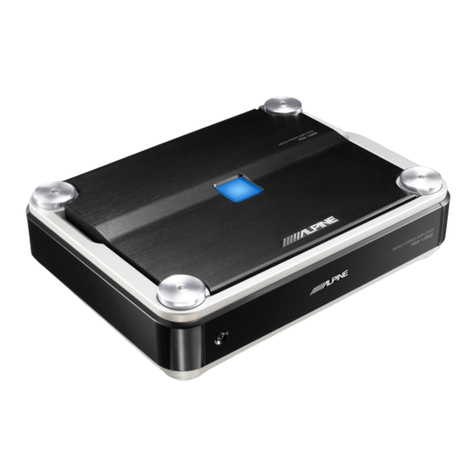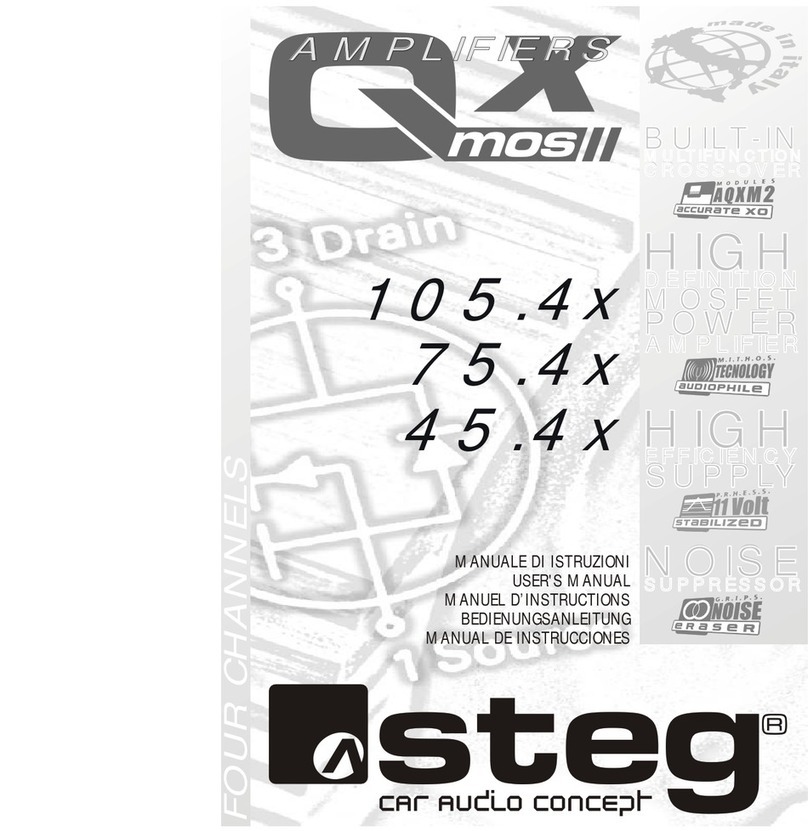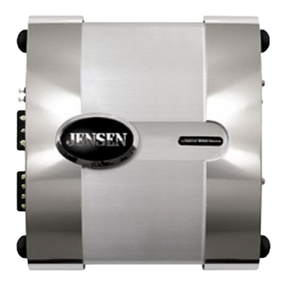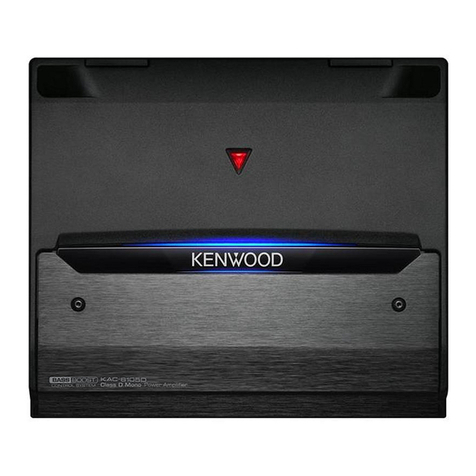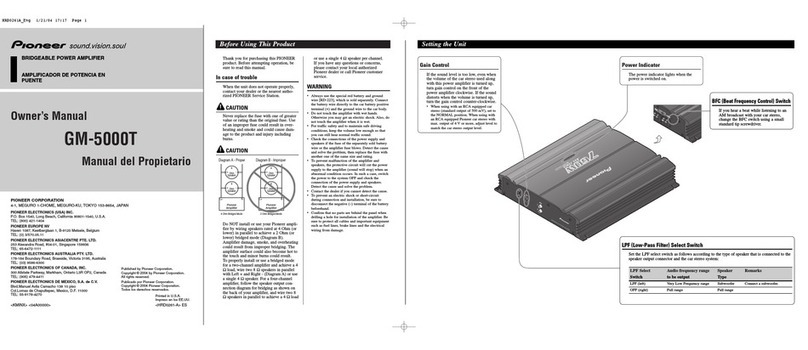
ch 3/4 high level inputs 12
13
features and specifications
4 ch amp PLA4170.PLA4270
features and controls
4 ch amp PLA4170.PLA4270
PLA4170
4 channel amplifier
frequency response
power supply voltage
output power @ 14.4v DC, 1KHz
RMS Power @ 4 Ohms
RMS Power @ 2 Ohms
Maximum Power Output
input sensitivity
low level inputs
high level inputs
35 Watts x 4
50 Watts x 4
250 Watts x 4
15 Hz-30 KHz
250mV
2.5V
14.4V DC Neg. Ground (10.5-16V)
maximum current draw
dimensions (W x H x L) mm
inches
2-4 Ohms
30A
4-8 Ohms
input impedance
low level inputs
high level inputs
10KOhms
100 Ohms
matching speaker impedance
stereo mode
bridged mode
292 x 60 x 305
11.5 x 2.34 x 12
PLA4270
4 channel amplifier
75 Watts x 4
110 Watts x 4
400 Watts x 4
40A
292 x 60 x 432
11.5 x 2.34 x 17
speaker connections
power fuse power terminals
power LED
protection LED
ch 1/2 crossover mode selector switch
ch 1/2 bass boost level control
ch 1/2 input level control
ch 1/2 high pass frequency control
ch 1/2 low pass frequency control
ch 1/2 high level inputs
ch 1/2 low level inputs
ch 3/4 crossover mode selector switch
ch 3/4 bass boost level control
ch 3/4 input level control
ch 3/4 high pass frequency control
ch 3/4 low pass frequency control
ch 3/4 low level inputs
ch 3/4 remote bass boost
(PLA4170 without)
crossover mode selector
input level control
low pass frequency control
high pass frequency control
Remote Bass Boost
bass boost level control
low level inputs
high level inputs
power LED
protection LED
power fuse
power terminals
speaker connections
when used with normal, full range systems, set this switch to “FULL.” If
youwishtousetheinternalcrossovertopoweradriverofspecificfrequency
range, use the “LOWPASS” or “HIGHPASS” settings.
use this control to match the outputs of your head unit to the amplifier.
Starting with your head unit set at about the 2 o’clock position, increase
the amp level control until distortion begins to occur, and reduce slightly
from this point.
whenthe crossover selectorswitch is in“low pass” mode,this control sets
the upper frequency limit for audio program sent to the speakers.
when the crossover selector switch is in “high pass” mode, this control
sets the lower frequency limit for audio program sent to the speakers.
Plug in the Remote Bass Boost Control wire in here.
this control permits adjustment of the bass level up to an increase of
approximately 18 dB.
this amp features gold-plated RCA input jacks for high impedance input.
Use these with car stereo output which uses RCA-type connector cables.
if your car stereo lacks RCA-type output jacks, you may connect speaker
output leads to these input connectors.
this indicator is illuminated when power is applied.
this indicator is illuminated when built-in protection circuitry is activated.
the fuse protects the amplifier and your car’s electrical system from short
circuit conditions.
use these connectors to deliver power, ground and remote turn-on control
to the amplifier.
these terminals are 14K gold plated to guarantee high conductivity and
minimum signal loss.
PLA4170
PLA4270
